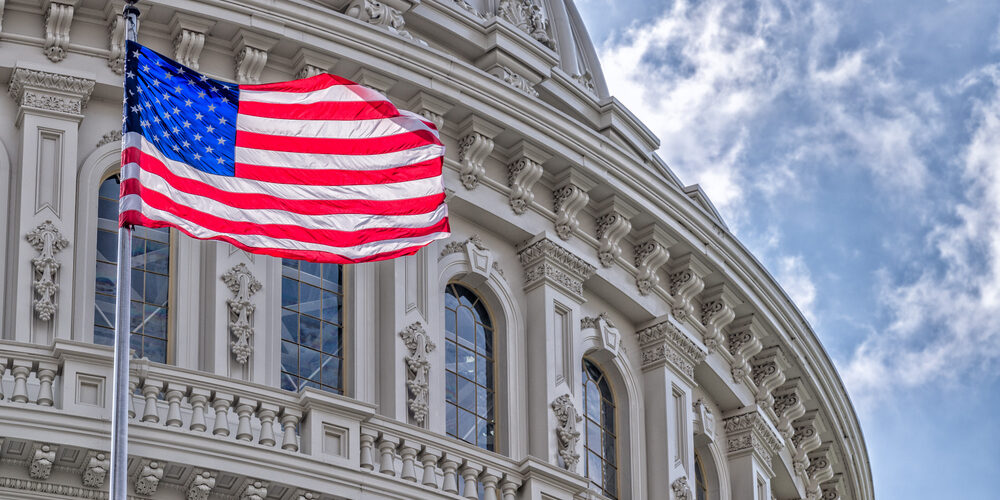Whether you need income assistance or help putting a roof over your head or food in your fridge, you can find it here.
If you have never had a problem with income or paying bills, you have probably never thought about federal or state assistance programs. Since the pandemic hit and everything got costlier, though, you may want to know such information so you can take a huge financial load off your shoulders and stop living paycheck to paycheck.
What are all the government assistance programs, then? We can’t list them all in this guide, but here is a look at the top ones that may help you the most.
Outline: Federal Government And State Assistance Programs:
- Section 8
- Public Housing
- USDA Multi-Family Housing Rentals
- Subsidized Housing
- Senior Housing
- LIHEAP
- ACP
- National Hunger Hotline
- Food Stamps
- NSLBP
- WIC
- TANF
- SSI
- General Assistance
- Student Financial Aid
Federal Government And State Assistance Programs
These aren’t the only government programs that can help you stay afloat. They are probably the most popular ones, however, so don’t hesitate to apply for their benefits as soon as possible.
Although these programs are not listed in any particular order, we did try to list them according to the type of assistance they provide, such as housing, food, cash, etc.
Section 8
Section 8 is the old yet still commonly used name for what is now called the Housing Choice Voucher Program. A Housing Choice Voucher helps you limit out-of-pocket rent expenses to 30 percent of your income. The government pays the rest directly to your landlord, and you can have your utilities covered to save even more cash.
If federal assistance with rent is what you need, you can’t go wrong with Section 8. Just know that it may take a while – years in some cases – to get your Housing Choice Voucher.
Public Housing
What do many people do if they cannot get a Housing Choice Voucher via Section 8? They turn to public housing, as it is another budget-friendly option for those living on a limited income.
The government owns public housing. Does this mean you’ll be living in an unsafe, massive, dreary building? Probably not, since public housing can give you the option of living in high-rise buildings that are clean and safe, plus single-family homes that offer more privacy.
If public housing sounds like it could be the fix your finances need, contact your Public Housing Agency to learn more about this government assistance program.
USDA Multi-Family Housing Rentals
Speaking of privacy and single-family homes, would you prefer to live outside of the city? The U.S. Department of Agriculture (USDA) could help you achieve that goal with its affordable multi-family housing rentals.
This rural housing option can pay a portion of your rent while letting you choose between properties of all sizes. Whether you just need a small studio or a larger house (up to four bedrooms) for your growing family, the USDA can help with its government assistance program.
Subsidized Housing
Even though we mentioned that public housing could put you in a nice, safe place, you still may not be convinced that it is the right fit for you. If that’s the case, you may want to look into subsidized housing, as it’s not government-owned property and can give you even more options when it comes to where you live.
Subsidized housing simply means that the government pays a portion of your rent. The aforementioned Section 8 is a type of subsidized housing program. You can discover more by contacting your PHA. And if you are curious as to where subsidized housing may be in your area, you can use the HUD Resource Locator. Its main menu can also help you find the nearest HUD office, PHA, and homeless resources should you be facing eviction and fear ending up on the streets.
Senior Housing
Seniors have been hit pretty hard by inflation and rising rents, as many need to get by on fixed incomes that no longer stretch as far as they used to. If you or a family member is a senior seeking housing assistance, try the Section 202 program by contacting your local HUD office.
Section 202 works similarly to Section 8, but it has the added benefit of offering housing equipped for seniors’ unique needs in terms of accessibility, care, etc. It can be a lifesaver for seniors worried about how they’ll pay the bills (especially rent) on a fixed income.
LIHEAP
A Section 8 voucher can cover most of your rent costs, and in some cases, it can also pay your utilities. That’s a great extra benefit to have, as utilities are getting more expensive, and many households are close to having their lights shut off due to nonpayment.
What if you don’t have a Section 8 voucher, though? Is there a way to get utilities assistance from the government? The answer is yes, and you can get it through the Low-Income Home Energy Assistance Program (LIHEAP).
Will LIHEAP pay your entire utility bill? No, although it can provide occasional bill payment assistance during exceptional circumstances. Instead, LIHEAP is designed to cover cooling and heating costs, which can make up a large portion of your monthly bill if you live in an extremely hot or cold climate.
LIHEAP does more than just cover cooling and heating costs, as it can also weatherproof your home to lower your future bills. And if your AC or heater breaks down, you may qualify for a replacement through the program.
ACP
LIHEAP is one form of government utilities assistance. ACP, or the Affordable Connectivity Program, could be considered another. Why? Because many consider the Internet to be a utility nowadays since we need it for so many daily functions.
With the ACP, you can get a $30 discount on your Internet service each month. And if you need a new device to connect to the Internet, such as a laptop or tablet, the Affordable Connectivity Program will also give you $100 towards that purchase.
National Hunger Hotline
This may not be considered a long-term government assistance program, but if you are hungry now and need short-term help, the National Hunger Hotline is tough to top. Dial 866-3-HUNGRY on your phone, and you can connect with an operator quickly to find local soup kitchens, food banks, pantries, etc.
Unlike other federal assistance programs on this list, the National Hunger Hotline will not require you to complete a formal application. It does not have formal eligibility requirements either, other than being hungry and needing food now. Just be sure to call during the hotline’s operating hours of Monday through Friday between 7 am and 10 pm.
Food Stamps
Do you have to buy less food for your family because groceries have become so expensive?
Instead of letting your household’s nutrition suffer, see if you can qualify for food stamps (aka SNAP benefits). If eligible, you could get funds loaded onto an EBT card that you can swipe at the grocery store to buy essentials like meat, dairy, fruits, vegetables, snacks, cereals, bread, etc. What can’t you buy with food stamps? Non-essentials like hot foods that are ready to eat at the store, liquor, tobacco products, and other non-food items.
While food stamps may have come with a negative stigma in the past, tens of millions of people are using them nowadays. And unlike the past, when you had to take out actual stamps/books to pay, which could cause stares, your EBT card is quite discreet.
SNAP (Supplemental Nutrition Assistance Program) can help you cut your out-of-pocket food costs, but it can also score savings elsewhere. By simply owning an EBT card, you can enjoy discounts on Amazon Prime membership, admission into local museums and zoos, and much more.
NSLBP
SNAP is just one way to keep your family fed. If you have kids under 18, here are two more: The National School Lunch and Breakfast Programs (NSLBP). These programs help low-income parents ensure that their children do not go hungry during those long school days. How? By giving them nutritious breakfasts and lunches that are either free or offered at an extremely budget-friendly price. And depending on your situation, your kids could also get additional meals if they attend after-school programs.
Most federal and state assistance programs look at your income to determine eligibility for benefits. The NSLBP does the same, but you could automatically qualify for free or reduced-price meals for your kids if you receive other forms of government help, such as SNAP.
WIC
The Special Supplemental Nutrition Program for Women, Infants, and Children (WIC) helps women and their young children buy essentials like infant formula, fruits, vegetables, juice, dairy, and more. While available in all 50 states, WIC is federal and not considered one of the many state assistance programs.
You can enjoy your WIC benefits via an EBT card or by getting items delivered to your home or at a distribution site. And as with other federal assistance, you can stack WIC with other benefits, such as SNAP, to keep your family fed and your costs low.
TANF
As you can see, there is plenty of federal assistance for housing and food. But what about income assistance? That exists through Temporary Assistance for Needy Families (TANF). This temporary program, which many refer to as “welfare,” offers cash to financially struggling families that typically have young children.
In simplest terms, TANF is meant to help you get back on your feet so you can become self-sufficient. The program does this via its cash benefits, which can be used for necessities such as food, clothing, and housing, plus job training to help recipients find work.
SSI
Another form of income assistance is SSI or Supplemental Security Income. It’s a federal assistance program meant to help those with limited income and resources. Typical SSI beneficiaries are disabled, blind, or over 65, but kids under 18 with certain physical or mental conditions can also receive benefits.
Qualify, and you can get a payment each month to help with your food, housing, and clothing costs. Receiving SSI benefits can also help you automatically qualify for SNAP. It can help you get Medicaid coverage, too, so you don’t have to worry about out-of-control healthcare costs.
Although SSI can provide income assistance and a much-needed boost to your bank account, know that qualifying can require a ton of documentation.
General Assistance
So far, we have discussed federal and not state assistance programs. General Assistance (GA) is help offered by your state that is similar to TANF since it supplies cash benefits that can be used for essential expenses like housing, food, and clothing. Unlike TANF, however, General Assistance is geared to help low-income individuals who do not have children and cannot qualify for other benefits.
Unfortunately, General Assistance is a safety net not offered across the country. Thus, you will have to search and hope it is available near you. Do a Google search for “General Assistance” in your state to see if you have any luck.
Student Financial Aid
Are you looking to attend school to advance your career and make more cash? Or do you have kids near college age hoping to get their degree? Then you will want to look into student financial aid from the federal government, as it can help pay for school and reduce the need to take out loans.
Such aid is given out according to financial need. Perhaps the most popular form of federal financial aid is the Pell Grant. Qualify for it during the 2022-2023 award year, and you could get a max amount of $6,895 to help cover your college costs. Best of all, since it’s a grant, you do not have to pay that money back.
The first step to getting such cash is to fill out your Free Application for Federal Student Aid (FAFSA). It can help determine eligibility for federal grants, plus tell potential schools your level of need so they can offer scholarships and other rewards.




